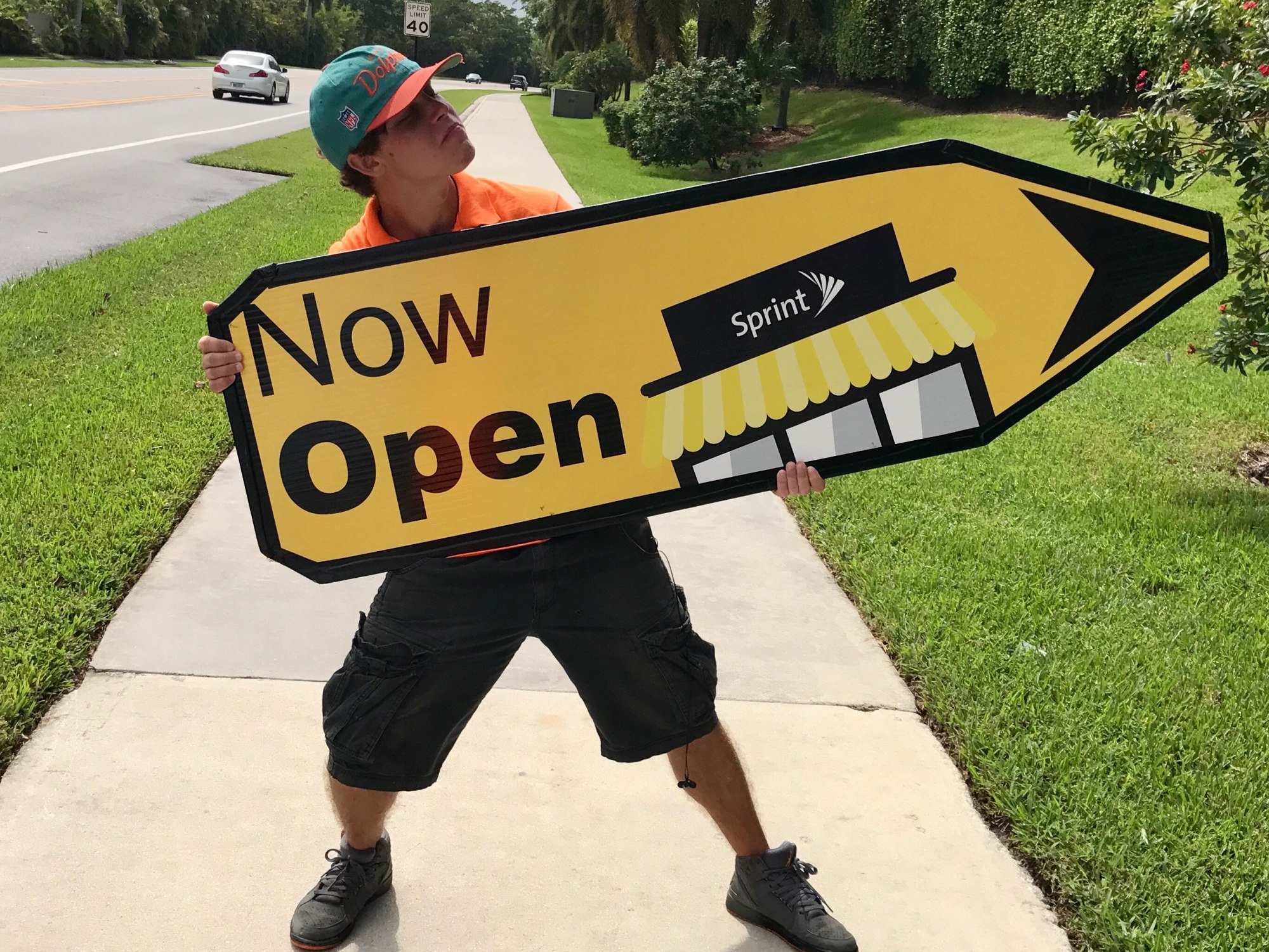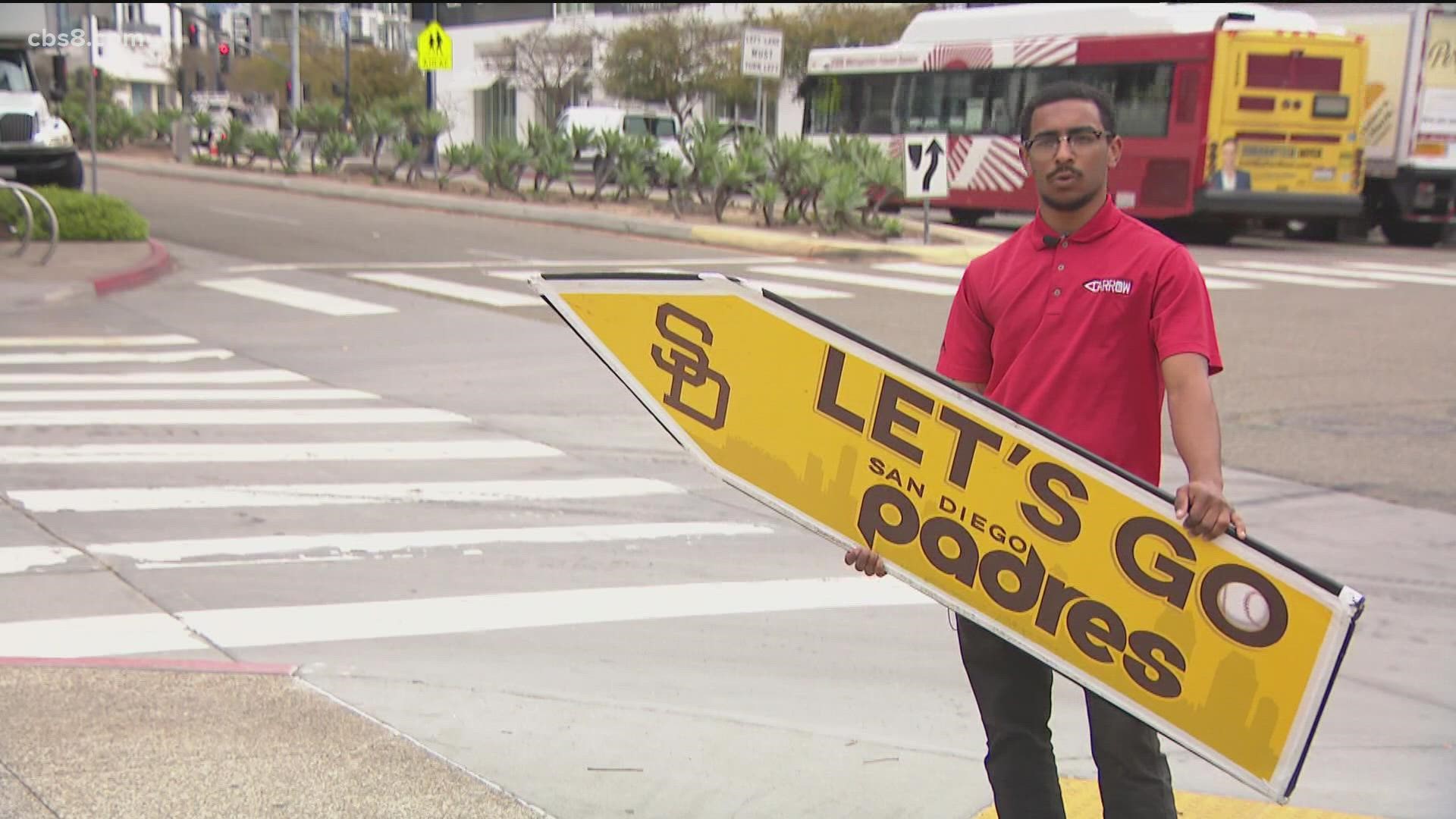In today's fast-paced world, sign spinners have become an essential tool for businesses to grab attention and drive customer engagement. Whether you're a small local shop or a large corporation, the role of a sign spinner cannot be underestimated. These dynamic marketing tools have revolutionized how businesses communicate with their target audience.
As competition in the marketplace intensifies, companies are constantly searching for innovative ways to stand out. Sign spinners offer a unique solution by combining movement, color, and messaging to create an eye-catching experience. In this article, we'll delve into everything you need to know about sign spinners, from their history and benefits to practical tips for maximizing their effectiveness.
Whether you're considering incorporating sign spinners into your marketing strategy or simply curious about their impact, this comprehensive guide will provide valuable insights. We'll explore the science behind why sign spinners work, how to choose the right one for your business, and expert tips for getting the most out of this powerful marketing tool.
Read also:Is Innout Burger Halalfriendly A Comprehensive Guide For Muslim Foodies
Table of Contents
- What is a Sign Spinner?
- History of Sign Spinners
- Benefits of Using Sign Spinners
- Choosing the Right Sign Spinner
- Sign Spinner Materials
- Placement Strategies for Maximum Impact
- Cost-Effectiveness of Sign Spinners
- Environmental Impact of Sign Spinners
- Legal Considerations for Using Sign Spinners
- Future Trends in Sign Spinner Technology
What is a Sign Spinner?
A sign spinner refers to a rotating sign that uses wind power or mechanical movement to create dynamic visual displays. These signs typically feature bold messaging, vibrant colors, and eye-catching graphics that capture the attention of passersby. The spinning motion creates a sense of urgency and draws attention to specific promotions, services, or events.
Types of Sign Spinners
There are several types of sign spinners available in the market today:
- Wind-powered spinners
- Mechanical spinners
- LED-lit spinners
- Customizable digital spinners
History of Sign Spinners
The concept of sign spinners dates back to the early 20th century when businesses first began experimenting with moving signage to attract customers. Over the decades, advancements in materials and technology have transformed these simple signs into sophisticated marketing tools.
Key milestones in the evolution of sign spinners:
- 1930s - Introduction of wind-powered signs
- 1980s - Development of mechanical spinning mechanisms
- 2000s - Integration of LED lighting
- 2010s - Emergence of digital customization options
Benefits of Using Sign Spinners
Sign spinners offer numerous advantages for businesses looking to enhance their visibility and customer engagement:
- Increased foot traffic
- Improved brand recognition
- Cost-effective marketing solution
- Customizable messaging options
Psychological Impact of Sign Spinners
Research has shown that moving objects capture human attention more effectively than static displays. Sign spinners leverage this psychological principle to create a powerful marketing tool that can increase customer engagement by up to 40%.
Read also:The Credit Union Of Southern California Your Trusted Financial Partner
Choosing the Right Sign Spinner
When selecting a sign spinner for your business, consider the following factors:
- Target audience demographics
- Business location and environment
- Marketing goals and objectives
- Budget constraints
According to a study by the Signage Industry Association, businesses that use customized sign spinners experience a 35% higher customer engagement rate compared to those using generic options.
Sign Spinner Materials
The materials used in sign spinners can significantly impact their effectiveness and durability:
- Plastic - Lightweight and cost-effective
- Aluminum - Durable and weather-resistant
- Acrylic - Provides a premium appearance
- Fabric - Offers flexibility for complex designs
Environmental Considerations in Material Selection
With growing concerns about sustainability, many businesses are opting for eco-friendly materials in their sign spinners. Recycled plastics and biodegradable options are becoming increasingly popular in the signage industry.
Placement Strategies for Maximum Impact
The location of your sign spinner can greatly influence its effectiveness:
- High-traffic areas
- Visibility from main roads
- Proximity to competitors
- Alignment with business hours
Data from the National Retail Federation shows that strategically placed sign spinners can increase customer traffic by up to 50% during peak hours.
Cost-Effectiveness of Sign Spinners
When evaluating the cost-effectiveness of sign spinners, consider both initial investment and long-term benefits:
- Initial setup costs
- Maintenance requirements
- Customer acquisition rates
- Return on investment (ROI)
A study published in the Journal of Marketing Research found that businesses investing in sign spinners see an average ROI of 200% within the first year of implementation.
Environmental Impact of Sign Spinners
The environmental impact of sign spinners depends largely on their design and materials:
- Energy consumption of mechanical models
- Recyclability of materials
- Life cycle assessment
- Sustainable manufacturing practices
According to the Environmental Protection Agency, businesses can reduce their carbon footprint by up to 30% by choosing eco-friendly sign spinner options.
Legal Considerations for Using Sign Spinners
Businesses must be aware of local regulations regarding sign spinners:
- Height restrictions
- Placement guidelines
- Lighting requirements
- Noise ordinances
The American Sign Council provides comprehensive resources for businesses to ensure compliance with local sign ordinances and regulations.
Future Trends in Sign Spinner Technology
The future of sign spinners holds exciting possibilities:
- Integration with smart technology
- Augmented reality experiences
- Interactive display options
- Sustainable energy solutions
Industry experts predict that by 2030, over 80% of sign spinners will incorporate advanced technology features that enhance customer engagement and data collection capabilities.
Conclusion
In conclusion, sign spinners represent a powerful and effective marketing tool for businesses seeking to increase visibility and customer engagement. From their historical evolution to modern technological advancements, sign spinners continue to play a crucial role in the marketing landscape.
We encourage readers to:
- Share their experiences with sign spinners in the comments section
- Explore related articles on our website for more marketing insights
- Subscribe to our newsletter for the latest updates in signage technology
By implementing the strategies and insights shared in this guide, businesses can maximize the effectiveness of their sign spinner investments and achieve superior marketing results.

